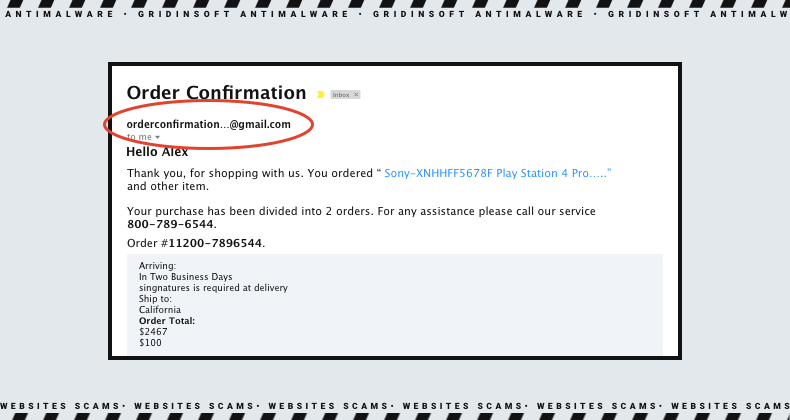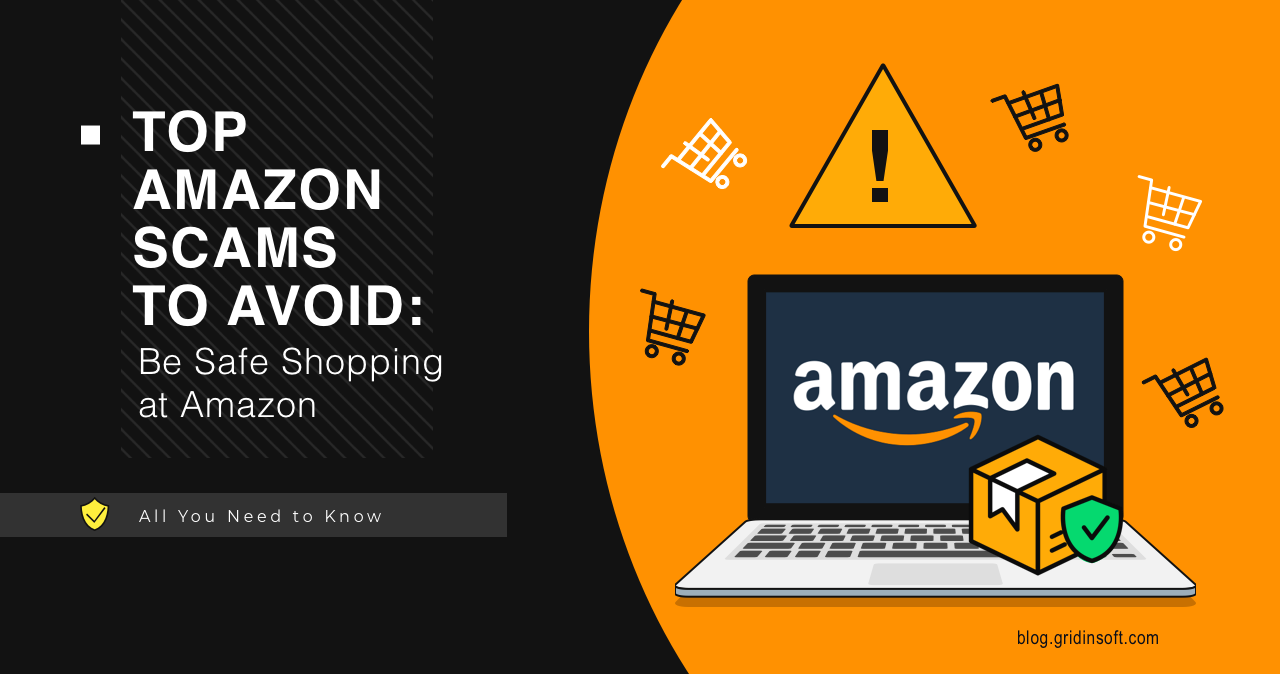Because of its reliability, Amazon is a popular choice for both buyers and sellers. But fraudsters frequently turn to the eCommerce market to scam others. In addition, false threats expose new vulnerabilities daily. Consequently, taking measures to safeguard your business is crucial. This is because many scams target businesses every day. This is why we created a list of top Amazon scams that businesses face and ways to avoid them.
How Do Amazon Scams Work?
Scam artists use deceptive methods such as social engineering to trick people into thinking they are being fooled by the Amazon scams they create. New scams are found every day, thanks to these fraudsters. They pretend to be actual representatives of Amazon to lure you with enticing offers you can’t refuse. They’ll ask for your credit card number, money, orde purchase from them.
Common Amazon Scams
1. Unauthorized Purchase Scam
Cybercriminals can abuse a customer’s account by fraudulently requesting expensive merchandise they don’t intend to purchase. They’ll often do this by using a phishing email or phone call. Crooks can ask customers to reveal their credit card information during a phone call or visit a phishing website. If customers comply, cybercriminals can drain their bank accounts through the sale.

2. Fake Technical Support
Scammers are impersonating Amazon employees and contacting people claiming there’s a problem with their accounts or orders. This is to steal personal and financial information, take money from you or gain access to your computer. Messages are accepted via phone calls, emails, texts, and even Messenger (Facebook). Regardless of the method of communication, the ultimate goal is to obtain consumers’ personal and financial information. Scammers have successfully obtained social security numbers, sensitive banking information, driver’s license numbers, credit card information, tax IDs, and other personal information. Amazon states that the company will occasionally contact its customers, but the company “will never request personal information via email, text messages, or phone calls”. Additionally, Amazon will never request payment outside of the website and will never request remote access to your device.
3. Malicious Links with Amazon impersonation
This method of data theft relies on the victim believing an Amazon email scams or text message is from Amazon. They’re instructed to click a link or open a message to address a technical issue with their account. However, this site is completely controlled by crooks who send you spam messages. Wherever you click or whatever you type – it will end up on their screens. Since such sites usually ask for login credentials, banking information or similar personal data, it will be pretty dangerous to share it with less-than-trustworthy actors.
4. Amazon Gift Card Scam
Gift cards are only accepted for purchases on Amazon. They can’t be used for any other brands or retailers. They can’t use them for any legitimate sale or transaction outside of Amazon. Additionally, you can’t use gift cards from other brands or retailers to make a payment on Amazon. Redeeming a gift card to your account must be done on Amazon’s website. Only use gift cards for other retailers and brands in their respective locations. You can utilize gift cards that include a card network brand (e.g., Visa, MasterCard, American Express, or Discover) at stores that accept these cards. However, please don’t give them directly to an individual for payment. Do not provide gift card information (such as the claim code) to someone you don’t know or trust. Always verify the identity of anyone requesting gift card information.

5. Amazon Payment Scams
Con artists often convince you to pay for their products outside Amazon’s secure payment system. They’ll offer discounts or incentives if you pay via PayPal or Western Union. However, paying them in that way makes them free to cheat with your item. Because the payment was made outside of Amazon’s platform, the buyer protection mechanisms won’t be helpful in these circumstances. Additionally, merchants likely will delete an account after this event.
6. Prize Amazon Scam
This message appears as a notification to users that they have won a prize. However, to receive it, they must click on a link – that is apparently malignant. The website is controlled by scammers who will either steal your username and password or make you pay for a “prize” you’ll never receive. Crooks may also apply using a spoofed payment page, which means exposing your bank card details.
How To Identify An Amazon Scams?
- Check the email thoroughly. It probably needs to be more accurate if it has grammatical errors, unclear terminology, or indications of machine translation.
- Examine the tone of the message. A clear indication of a scam is a sense of urgency or desperation. Depersonated appeals (“Dear user” instead of mentioning your username) may be another marker.
- Be cautious of emails you are not expecting. It is surprising to hear about the discount on an item you’ve never been interested in, ain’t it? Don’t be naive and review things through genuine websites.
- Request to pay in a different payment method. Circumventing the Amazon payment mechanisms breaks the User Agreement, so both yours and the merchant’s account can be banned. More commonly, such a trick is a way to make the refund impossible.
How to report scams to Amazon
If you receive unsolicited communication from anyone claiming to represent Amazon, report it immediately. The most effective way to write the scam is to report it through Amazon’s website:
- Log in to your Amazon account on the mobile app or official website.
- You can access Amazon’s official customer service site by visiting the following URL: Amazon’s Customer Service.
- Navigate to the “Help” menu options and select Security and Privacy > Report Something Suspicious.
- Choose from the options, depending on how you responded to the suspicious communication.
- Make your report include as much information as possible. Examine the letter to get the merchant’s name, address, and screenshots of the correspondence. Pics of your chat and its offers will work out as well.
How To Prevent Amazon Scams
1. Never send money outside of the Amazon payment systems.
Amazon provides a secure payment system to protect buyers and sellers during transactions. Always ensure that all payments for purchases are processed through Amazon’s official payment system. Avoid any request to send money via direct bank transfer, wire transfer, or any third-party service outside Amazon’s platform. These requests are typically signs of fraud, as they bypass Amazon’s safeguards and make it difficult to recover funds in case of a scam.
💡 Why it’s important:
- Ensures buyer protection policies apply.
- Prevents exposure to fraudulent schemes.
- Facilitates easier tracking and dispute resolution through Amazon.
2. Avoid clicking on suspicious links. Log into your Amazon account by visiting their page or using the official app to check something.
Phishing attacks often use deceptive emails or messages containing links that appear to be from Amazon. These links may lead to fake websites designed to steal your login credentials or install malware. Instead of clicking on links from emails or messages, always manually enter “amazon.com” into your browser or use the official Amazon app to log in and check your account, orders, or any notifications.
💡 Why it’s important:
- Protects your personal and financial information.
- Avoids exposure to malware and phishing scams.
- Ensures you interact with the genuine Amazon site.
3. Never divulge personal information or credentials to anyone who claims to be representing Amazon.
Amazon will never ask for sensitive information such as your password, Social Security number, or credit card details via phone, email, or text. Be cautious if someone contacts you claiming to be from Amazon and requests personal information. Do not provide any such details, as this could lead to identity theft or fraud.
💡 Why it’s important:
- Prevents unauthorized access to your account.
- Protects against identity theft and financial loss.
- Ensures your personal data remains secure.
4. Call Amazon to verify if you observe anything questionable or unsure about someone acting as their representative over the phone.
If you receive a phone call, email, or any other communication from someone claiming to be from Amazon and you are uncertain about its legitimacy, do not respond or provide any information. Instead, contact Amazon directly using the customer service number listed on their official website to verify the authenticity of the communication. This step helps you confirm whether the contact is genuine and allows Amazon to take action if it is a scam.
💡 Why it’s important:
- Provides direct confirmation from Amazon.
- Helps in identifying and stopping fraudulent activities.
- Ensures peace of mind by getting accurate information from a trusted source.





